Yasmani Ceballos-Izquierdo, Dwayne Free, Ashley Hughes, Frankie Lucena, Eddie Irizarry and Manuel E. Grullón
The meteor and fireball records of Cuba, Jamaica, Haiti, Dominican Republic and Puerto Rico, are reviewed, including records not listed in the American Meteor Society online fireball event database.
1 Introduction
Over the centuries many fireballs have been observed across the Caribbean. Some notable historical cases are: a meteor explosion near Antigua (November 9, 1839), a large meteor over St. Thomas’s Island (March 20, 1821), a fireball seen over West Indies (August 20, 1821), and a brilliant meteor bursting over Martinique (November 14, 1867) (Greg, 1861). Early meteor observations in Cuba were made mostly in the second half of the 19th century (De la Sagra, 1867; Poey, 1862, 1864; Rodríguez-Ferrer, 1876; Viñes, 1886) (Figure 1). More recently, Lunsford (1995) reported Eta Aquariids and sporadic meteors, and Kartashova et al. (2017) reported on the observations of a Geminid meteor shower from the western portion of the island.
Bright fireballs from Cuba are poorly known inside and outside the island. The topic just gained more attention after the fall of Viñales on February 1, 2019, the Holguín bolide on March 19, 2021, and the Ramón de las Yaguas fall on July 10, 2021 (Ceballos-Izquierdo et al., 2021b and references therein). Consequently, a new wave of publications about fireballs over Cuba is starting to occur (e.g. Ceballos-Izquierdo, 2021; Ceballos-Izquierdo et al., 2021a, 2021b; Iturralde-Vinent and Arango-Arias, 2021; Zuluaga et al., 2019). Actually, the first trajectory estimations for a Cuban bolide were on the Viñales and the Holguín events (Ceballos-Izquierdo et al., 2021a, 2021b; Zuluaga et al., 2019). Concerning the Ramón de las Yaguas fall, some residents claim they saw a fireball[1] and its smoke trail, but only the seismic record of the explosion of the cosmic object is available, captured in three seismological stations in eastern Cuba (Iturralde-Vinent and Arango-Arias, 2021). Then, Ceballos-Izquierdo et al. (2021a) proposed the need of an implementation of a network for monitoring the sky using surveillance cameras that can record the passage of meteors through the atmosphere.
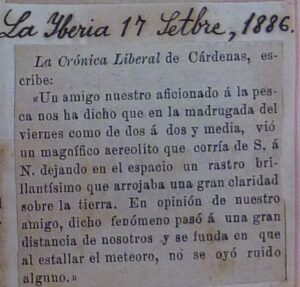
Figure 1 – Chronicle of the crossing of a bright fireball in the Cuban sky, printed in a newspaper from September 1886 (Photo: L.E. Ramos-Guadalupe; used by permission).
On the other hand, the fireball record of Puerto Rico is far richer and perhaps better known, thanks to the diffusion work carried out by the Caribbean Astronomical Society (SAC) and amateur observers. In addition, a few fireballs have been recorded from the Dominican Republic as well. However, the information about all these events is scattered and there are also insufficient publications on the subject.
Here we review the meteor and fireball record of Cuba, Jamaica, Haiti, Dominican Republic and Puerto Rico, including records not listed in the American Meteor Society (AMS) online fireball event database. The available information is summarized below, as a starting point for future research.
2 Cuban events
Sightings of the crossing of bright fireballs have been reported in the Cuban sky, but they are insufficiently studied (Ceballos-Izquierdo et al., 2021b). For example, between 2012 and 2022 several reports are logged at the online fireball event database (Event number 2206-2014, 414-2016, 1559-2016, 1497-2017, 4759-2018, 5025-2018, 5233-2018, 5955-2018, 513-2019, 1755-2021) of the AMS. The fireballs 1497-2017, 513-2019 and 4759-2018 are over Florida (USA), not Cuba. Excepting 513-2019 (Viñales) and 1755-2021 (the Holguín event), all the other Cuban events are from single observers only. If they were very bright fireballs, they would have been seen by more people.
Since the beginning of the use of the Geostationary Lightning Mapper (GLM) aboard the GOES 16 and GOES 17 satellites for detection of meteors in July 23, 2017 until the last update (December 16, 2021), there are 9 meteors reported over Cuba: 3 events of low confidence (2 from GLM-16 and 1 stereo), 3 events of medium confidence (1 from GLM-16 [the Holguín bolide] and 2 stereo), 2 event of high confidence (both stereo: one of them the Viñales meteorite fall).
Recently, Ceballos-Izquierdo et al. (2021b) described the Viñales event and estimated the trajectory of the fireball, as an alternative to the Zuluaga et al. (2019) estimation, for that reason the fireball is not listed here.
Morón, 1867
Naranjo and Aguilar (1941) mentioned the occurrence of a probable meteorite that fell near the town of Morón (Ciego de Ávila province), on the night of November 24, 1867. These authors recount the tale of a suspected meteorite landfall based on the narration of Caridad Recino, who was an eyewitness: “she was with her family at the door of the house, when everything was illuminated, seeing how the sky was divided by a wide strip of fire, throwing sparks and stars, the bolide followed the north direction and fell with a fantastic crash, which produced a big alarm in Morón”. The fireball supposedly crossed over the northbound town and crashed causing an earthquake.
Havana, 1886
Viñes (1886) described what appears to be possibly a meteorite of great brightness and size that fell into the seafront of Havana city, causing panic in the neighbors. He pointed out that on Monday, May 10, 1886, approximately at 00h30m UTC, the inhabitants of Havana city witnessed a luminous object that was moving slowly in the sky, coming from the north. It produced such a commotion, that the Spanish authorities asked Viñes, director of the Observatory of the city, to publish a note explaining the phenomenon and in the next two days the main newspapers wrote about the event to calm the inhabitants. Based on the Viñes’ narration, Ramos-Guadalupe (2004) suggested a tentative magnitude around –10 for this fireball and estimated the meteor entered the atmosphere through a point located on the Gulf of Mexico, almost north of Havana, with part of its trajectory over the bay area.
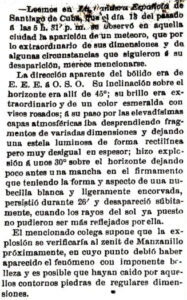
Figure 2 – A very good description for the time of a fireball, on October 18, 1891 in eastern Cuba. (Photo: L.E. Ramos-Guadalupe).
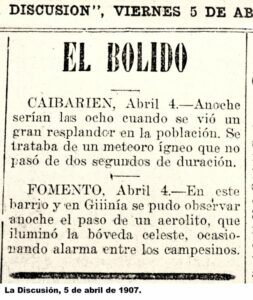
Figure 3 – Fireball in the Cuban sky, printed in a newspaper from April 1907 (Photo: L.E. Ramos-Guadalupe).
Consolación del Sur, 2010
On June 7, 2010, 03h40m UTC, a striking fireball was observed from Consolación del Sur (Pinar del Río province), but no meteorite was located. Peláez (2010) reported this rare event in the press and cited Efrén Jaimez-Salgado as a witness, saying that a huge and bright bolide crossed from north to south the sky of Pueblo Nuevo, near Consolación del Sur and could have fallen somewhere south of the town of Alonso de Rojas, or at sea, in waters of the Gulf of Batabanó. He also indicated that the object, apparently quite large, was leaving behind a huge bright greenish-white trail and a detonation was heard a few seconds later.
Calimete, 2013
An unidentified light phenomenon crossed the sky of Calimete (Matanzas province) at 1h30m UTC on February 5, 2013, and was sighted by dozens of residents of the town (Solís-Díaz, 2013). Eyewitnesses described the event as a reddish light source descending at high speed, crossing over the town from the northeast, and then in a descent in which it disappeared, caused a sound like an explosion. The locality of the alleged crashing could be a site near the contiguous town of Los Arabos; an area with unfavorable terrain conditions for recovery due to sugar cane plantations. Meteorites were not found.
Rodas, 2013
On February 14, 2013, a bright bolide was reported from several communities in Rodas, Cienfuegos province, central Cuba (Ceballos-Izquierdo, 2019). Local researcher Marcos Rodríguez-Matamoros described the event as a small bolide, without being able to verify a meteorite landfall with the collection of any fragment. According to Lobanovsky (2014), the bolide explosion occurred at a height of 18 – 21 km. Testimonies agreed that there was a very intense light that reached the size of a bus and exploded, and windows and walls shook following the explosion. According to the latter information, this was probably the first Cuban bolide that generated a seismological signature, but those records are not available.
Holguín, 2021
Recently, a rare event aroused attention when the National Seismological Service of Cuba reported in a note that, on the night of March 19, 2021, at 03h06m UTC, their stations in Oriente had registered vibrations that did not correspond with an earthquake (Iturralde-Vinent and Arango-Arias, 2021). Coinciding with the time of the anomaly, a natural phenomenon was observed in the eastern provinces of the island. The following day, the online fireball event database of the AMS recorded the event as 1755-2021, for a fireball sighted by various observers who reported it to this international platform, including witnesses from Jamaica and the west coast of Florida (USA). Based on a video recorded in Kingston (Jamaica) and the GLM / GOES-16 data, the space rock reached the Earth’s atmosphere at an angle of 42.7° relative to the ground and a speed of ~50000 km/h (Ceballos-Izquierdo et al., 2021a). The meteor appeared at an altitude of approximately 65.5 km between the town of La Maya and Los Reynaldos and continued for 3.7 seconds in a northerly direction until it disappeared at an altitude of 30.4 km, northeast of La Deseada (Ceballos-Izquierdo et al., 2021b). No meteorites from this bolide have been found thus far.
3 Jamaica events
Except for the Cuban bolide of March 19, 2021 which was also recorded from Kingston, there is not much footage material of meteors and fireballs sighted from Jamaica. However, there is remarkable historical information, including probably the oldest meteor documented for the Caribbean.
Jamaica, 1700 (?)
Barham (1717) noticed a large meteor landing at St. Jago de la Vega, Jamaica, about the year 1700. The publication referred to many deep holes in the ground, but no meteorites were found. This information is also listed in the catalog of Greg (1861).
Kingston, 1812
According to Darwin (1840) “At Kingston, in Jamaica, in November 1812, a large meteor appeared a few minutes previous to some alarming and tremendous concussions”.
Kingston, 1888
A very brilliant meteor was seen at Kingston, Jamaica, on the evening of November 10, 1888, at 0h52m local time (Hall, 1889). It appeared about 30° above the south-west horizon, crossed the heavens, and disappeared about 30° above the north-northeast horizon; and as Kingston is in lat. 18° N. The point of appearance was reported as the celestial coordinates R.A. 21h24m, N.P.D. 113°, and the point of disappearance R.A. 3h45m, N.P.D. 25° (Hall, 1889). According to eyewitness Mr. R. Johnstone cited by Hall (1889): “It was by far the brightest meteor I have ever seen, and it so lit up the sky as to cause consternation among many of the population. Exactly four minutes afterwards, I heard a sound as of a distant explosion, which was not quite so loud as the 9 o’clock gun at Port Royal, heard in due time about four minutes later. The sound was heard by other people in Kingston”.
4 Dominican Republic events
Several events are recorded for the Dominican Republic in the online fireball event database of the AMS (Event 3187-2019, 4892-2018, 3248-2018, 1243-2018, 656-2018, 754-2017, 4226-2015, 3702-2015, 2830-2015, 472-2014, 232-2013, 1479-2011, 1311-2011, 336-2011) but they are related to one or very few observers.
Confused reports of falling objects are disseminated on social networks also, but many of them are sunlit aircraft contrails[2], and rocket launches from Cape Coral like some zig-zag trails observed in western Cuba and explained by Ceballos-Izquierdo (2021). A luminous slow-moving phenomenon was seen from the Dominican Republic and Puerto Rico, crossing the whole sky, on January 21, 2020, and described on social networks as a meteorite that would have made landfall. However, it was likely a re-entry related to a rocket that China launched into space in 2017. We present a few interesting examples of meteors and fireballs from the Dominican Republic.
Santo Domingo, 2013
On August 05, 2013, a small meteor entering the Earth’s atmosphere was recorded at J. F. Kennedy Ave before reaching the intersection with the A. Lincoln corner, Santo Domingo (coordinates: 18.4843°, –69.9387°). The meteor darted across the sky around 03h35m UTC, startling drivers who were lucky to have caught the ball of fire descending at a high rate of speed on their cameras.
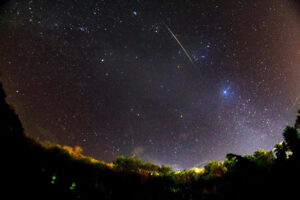
Figure 4 – Meteor seen from Las Carreras, Bani, Dominican Republic, February 12, 2018 at 5h01m UTC (Photo: M.E.G.).
La Romana, 2020
On February 21, 2020, a small bolide blows up over the Caribbean after entering Earth’s atmosphere. Preliminary GLM / GOES-16 satellite images suggest that it exploded over the southeast of the Dominican Republic, near La Romana at 07h30m UTC (Figure 6). Cameras operated by the SAC in Puerto Rico, and hurricane Nest cams in St. John (US Virgin Islands) also captured the event (Figure 5). Curiously it was the second meteor sighted from Puerto Rico during the same early morning hours in which another bright meteor was observed at around 6h57m UTC in an easterly direction, traveling with a north-south trajectory.
One of us (FL) recorded the fireball from Cabo Rojo, Puerto Rico. Based on the video taken from Cabo Rojo, the bolide certainly appears to have passed directly over the island heading in a West/South West direction. Actually, the GLM location data is affixed to an altitude conducive to cloud tops for lightning detection and the “grid” overlay of the Earth for that varies from around 7 km at nadir, to 14 km out on the edge of the FOV of the sensor. The bolide would have to have detonated somewhere close to a 14 km altitude for that location to be correct. So, if the bolide exploded at 14 km, it’s possible there was a fall on land, but based on the GLM location, the ballistic trajectory would likely place the fall in the water. The GLM-16 Pixel Centroid Location is Latitude: 18.6°, Longitude: –68.9° at an altitude of 14 km placing the subpoint of the bolide detonation over water, if 14 km is the correct altitude (Figure 7). The Azimuth and Elevation from the 14 km location to the GLM-16 sensor is -198.336° and 68.021°, respectively. However, if say 28 km in altitude was a more reasonable altitude for the bolide detonation, it would be completely over water a good distance South from the Dominican Republic. Anyway, the very rudimentary ground track from the GLM latitude and longitude values, suggest that it’s definitely traveling from northeast to southwest. We think that it has likely landed in the water, since the last of the flashes registering on the GLM places it off the coast. But there is wide room for error, as ±5 km error is map projection error for the GLM data (Jenniskens, 2018), so we can’t completely rule out fragments on land.
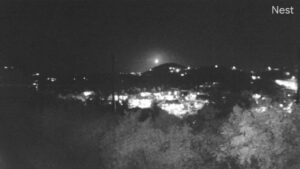
Figure 5 – Bolide seen from St John (US Virgin Islands) on February 21, 2020 (Photo: Mark Sudduth).
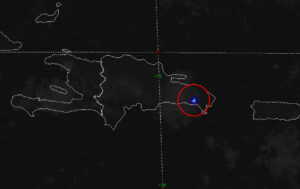
Figure 6 – Dominican Republic bolide of February 21, 2020 as captured by the GLM.
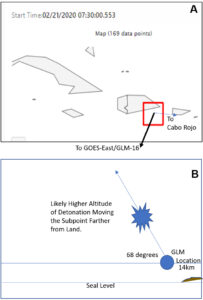
Figure 7 – A) GLM Pixel Centroid Location for the Dominican Republic bolide of February 21, 2020. B). Interpretation of the subpoint of the bolide detonation relative to the altitude.
Unfortunately, an astrometric calibration could not be performed on the two other videos (St. John and Fish Bay) because no positively identifiable stars could be extracted from background noise. Therefore, we cannot produce a precise trajectory of the fireball, because we cannot extract positional data from the videos. Light curve with calculated absolute magnitude vs. time, as done in the same fashion as Sankar et al. (2020) and Hughes et al. (2022) is presented in Figure 8. Temporal extent of the flash reading from GLM is 0.586 seconds. Max apparent magnitude is approximately –19, assuming a 6000K blackbody spectrum. Even this is variable depending on the temperature of the fireball, which can range from approximately 4000K (Borovička and Charvát, 2009) to 6000K (Brown et al., 2013). The estimated energy is about 14 Tons of TNT, following Brown et al. (2002) empirical relationship between luminous energy and total energy. Mass cannot be determined since we don’t have a lock on the velocity.
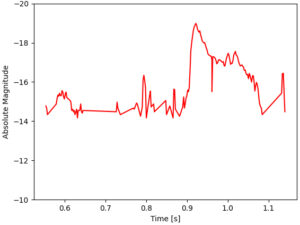
Figure 8 – Light curve with calculated absolute magnitude vs. time. Dominican Republic bolide of February 21, 2020.
Santo Domingo, 2020
A fireball was seen over Dominican Republic on May 2, 2020. The observed duration and speed, and the appearance in the available video are all consistent with a bright meteor. Sightings were reported in San Francisco de Macoris, Jarabacoa, Altagracia, Junumucú, Higüey and Santo Domingo.
5 Puerto Rico Events
In contrast to other territories of the Caribbean, Puerto Rico has a large visual record of meteors and bolides, offering a good opportunity to undertake future studies on these events (e.g. Figures 14–31). In addition to various amateur observers, a very nice initiative is the Puerto Rico Night Sky Network, which include eight Allsky cameras from different places on the island. The website[3] is maintained by Héctor Santini, an astrophotographer from the SAC, and display live images from the different stations and time lapse videos recorded from the night before.
For space reasons, this work only presents a brief description of the most notable meteors, the others that have an online record are listed in Table 1.
Bolide AIDA, 1989
On April 8, 1989 at 05h26m UT, an aubritic composition meteoroid (~25 kg initial mass) produced a very bright (–10 visual magnitude) slow moving bolide (4-sec duration) which was observed from three locations in Puerto Rico (Figure 9).
Information was obtained with seven different instruments. Preliminary calculations indicate that the bolide entered the atmosphere on a steep trajectory, about 32° from vertical, and was luminous from 65 km altitude at 15.0 km/s velocity down to 25.6 km altitude and 1–2 km/s velocity. The date of occurrence and the apparent radiant (ɑ = 190.8º;
δ= –7.7°), and the orbit shows that the bolide probably belongs to the x-Virginid stream, which is connected with the Apollo Group asteroids (Getman et al., 1991; Meisel et al., 1995).
Towards the end of the observed trajectory, the bolide exploded into at least four large fragments, which were observed by the All-Sky camera and the video camera systems. Meteorites could be discovered in the jungles of the Arecibo River valley south of Arecibo.
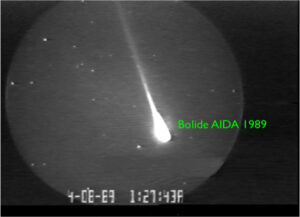
Figure 9 – Bolide AIDA captured from Arecibo Observatory (Puerto Rico) on April 8, 1989 at 05h26m UT (Photo: David Meisel).
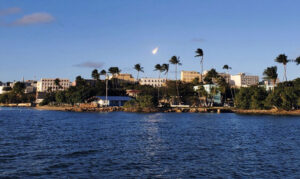
Figure 10 – Huge meteor fireball flashing across the sky of Puerto Rico on January 17, 2020. Residents reported loud noise associated with the event.
2019 MO
A car-size asteroid exploded in the atmosphere over Caribbean waters 170 miles south of Puerto Rico, on June 22, 2019, near 21h24m45s UTC. Weather satellite and radar captured the moment. Airwaves recorded by Bermuda infrasound station 2000 km north show periods which are consistent with a 5 kT bolide from a small multi-meter sized object NEA impact. UH’s ATLAS and Pan-STARRS survey telescopes were able to identify 2019 MO on Saturday morning before it entered Earth’s atmosphere, demonstrating that they can be used to provide advance warning for those that may be located at a possible impact site. The estimated path of 2019 MO was from east-to-west with an entry south of Puerto Rico, based on observations from the telescopes.
Following the impact of 2019 MO in the Earth’s atmosphere, radar record signatures of falling meteorites were reported in data from the NEXRAD weather radar network operated by NOAA, the TJUA (San Juan, Puerto Rico) (Matlovič et al., 2020). The first appearance of falling meteorites on radar occurred at 21h26m15s UTC and 10.6 km above sea level. Signatures consistent with falling meteorites appear in a total of four radar sweeps. It was estimated that all meteorites from this event ended up on the seafloor at a depth of approximately 4.8 km. Meteorite falls with enough mass to generate green pixels on weather radar are rare.
This event is not recorded by the AMS as there are no direct eyewitness reports. However, the bolide was detected by the GLM instrument on the GOES 16 weather satellite. US Department of Defense satellites also report the event[4] and calculate a total power of 6 kTons of TNT equivalent. A global infrasound network operated by the Preparatory Committee for the Comprehensive Nuclear Test Ban Treaty (CNTBT) also recorded this bolide and reports a total power of 5 kTons of TNT equivalent. Furthermore, the estimated size of 2019 MO was around 5 meters with a mass of about 200 T. This event is the third most powerful bolide recorded in the Caribbean and in the vicinity of North America since the US government sensors began reporting bolides in 1988.
Matlovič et al. (2020) suggest that the impact of the small asteroid 2019 MO, on June 22 near Puerto Rico, was not connected to the activity of the June epsilon Ophiuchids outburst.
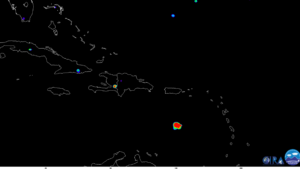
Figure 11 – NOAA satellite captured a multi-kiloton meteor explosion (2019 MO) just below Puerto Rico (Image: NOAA).
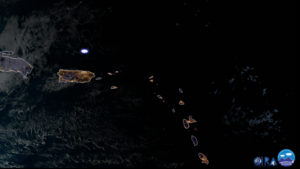
Figure 12 – Meteor flash just north of Puerto Rico at around 21h30m UTC on January 17, 2020 (Image: NOAA).
Caguas, 2020
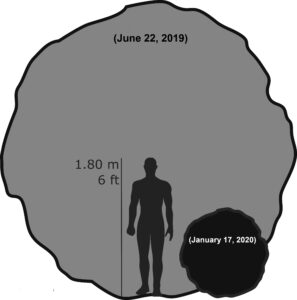
Figure 13 – Size comparison of the 2019 MO, the January 17, 2020 meteoroid and a human (Modified from imo.net).
A small asteroid entered the atmosphere just north of Puerto Rico at around 21h30m UTC on Friday January 17, 2020, which allowed many to witness this impressive daytime fireball from a large part of the island. Shortly after, users began posting video and images to social media sites and many reported to also hear a loud boom. A stele remained visible for several seconds, up to three minutes, some eyewitness reported. The AMS online fireball event database recorded the event as Event #2020-338 and counted 33 witness reports so far with the most distant coming from Anguilla.
The entrance of this large space rock into the atmosphere was detected by the NOAA weather satellites and infrasound stations in the Bermuda Islands, and the data collected indicates it was a small asteroid that was moving at a speed of 34673 miles per hour (55800 km/h) or about 15.5 km/s. The fireball was also detected with US government sensors, which published an entry time of 21h29m49s UT, coordinates 19.4° N, 66.0° W, and an energy of the entering object of 0.29 kt TNT.
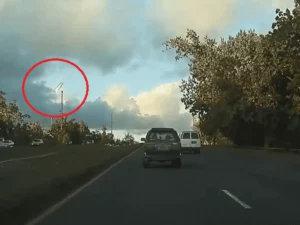
Figure 14 – Blazing meteor seen from Caguas (Puerto Rico) on January 17, 2020 (Photo: Rafael Emmanuelli Jiménez).
26 April, 2020
A bright fireball exploded over the Eastern Caribbean at around 00h40m UTC on April 27, 2020 lighting up the night skies between Martinique, Guadeloupe, Saint Martin, Saint Barthelemy, Gustavia, and Puerto Rico. The AMS online fireball event database received seven reports of the event, mainly from witnesses in Grande-Terre, Saint John, and Saint Thomas.
The observers’ description of the fireball’s color varied, with some saying it looked purple and light blue, orange and yellow, or light green. One viewer mentioned that the object had a glowing orange train of debris and a green flash that lit up the sky very brightly. According to one report in Guadeloupe, the fireball was seen with a “big red trail with a very bright white ball ahead”. Meanwhile, an observer in Antigua and Barbuda claimed that other people also witnessed the fireball in Saint Kitts and Florida. “No tail or fragmentation is seen– just a super-bright flash that lit up the entire sky in every direction” he added.
Puerto Rico, 7 May 2021
A huge meteor was visible from Puerto Rico, the Dominican Republic, and Cuba around 0h02m UTC, May 7, 2021. Observers who were able to appreciate the event described it as a “huge greenish ball, with a long tail.” Although it was visible looking towards the northwest, the trajectory of the meteor was from the North of the island descending towards the West, over the sea, as suggested by the SAC.
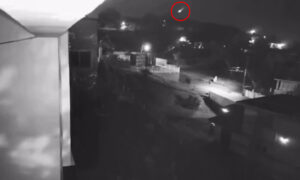
Figure 15 – Meteor streaks across Gurabo (Puerto Rico) on May 7, 2021 (Photo: Trinidad & Tobago Weather Center).
6 Conclusions
There are many cameras in Europe and the US but not too many in the Caribbean, even so there is a very rich historical record of meteors in the area that deserves more attention. Apparently, the territory with the scarcest record is Haiti, with only one entry of a fireball recorded in CNEOS, but no other record of casual footage from any observer could be located.
Ceballos-Izquierdo et al. (2021a) proposed the need of an implementation of a meteor observation network for monitoring the sky in Cuba, but this is something that should be extended to other Caribbean islands to improve the fireball record, taking advantage of the potential offered by the cameras installed in Puerto Rico. Such initiatives could be integrated in the future with the Global Meteor Network[5] that currently does not have cameras in the Caribbean. Until then, we intend that this compilation serve as exploratory research for future work.
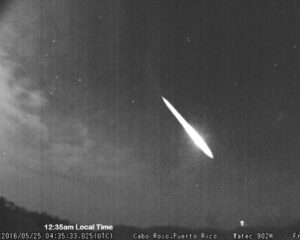
Figure 16 – Bright fireball captured on May 25, 2016 at 4h35m UTC. Taken in Cabo Rojo (Puerto Rico) (Photo: F.L.).
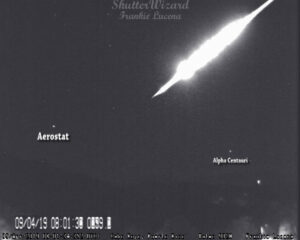
Figure 17 – Huge fireball captured on April 9, 2019 at 8h01m UTC facing south from Cabo Rojo (Puerto Rico) (Photo: F.L.).
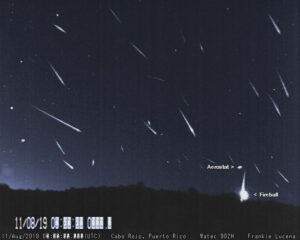
Figure 18 – Perseid meteors and a fireball on August 11, 2019. Taken in Cabo Rojo (Puerto Rico) (Photo: F.L.).
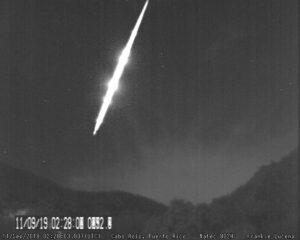
Figure 19 – Meteor captured on September 11, 2020 at 2h28m UTC facing northwest from Cabo Rojo (Photo: F.L.).
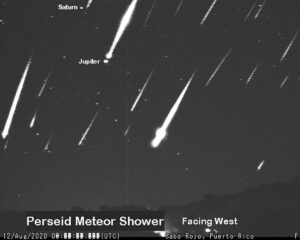
Figure 20 – Perseid meteor shower on August 12, 2020. Taken in Cabo Rojo (Puerto Rico) (Photo: F.L.).
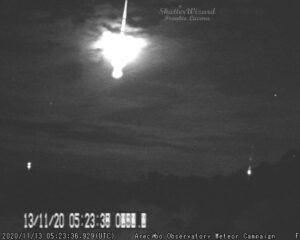
Figure 21 – Taurid fireball lights up the night sky on November 13, 2020. Taken in Cabo Rojo (Puerto Rico) (Photo: F.L.).
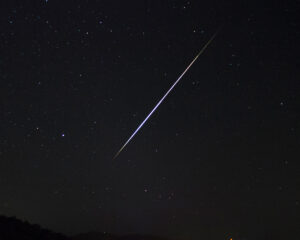
Figure 22 – Sporadic meteor photographed on December 30, 2016 at 3h15m UTC Cabo Rojo (Puerto Rico) (Photo: F.L.).
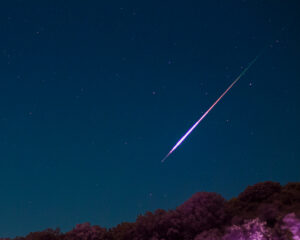
Figure 23 – Colorful meteor taken during the Perseid meteor shower on August 12, 2017 at 7h34m (Photo: F.L.).
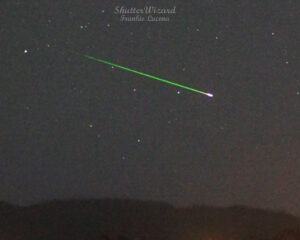
Figure 24 – Green meteor recorded on January 6, 2022 at 4h28m UTC in Cabo Rojo, Puerto Rico (Photo: F.L.).
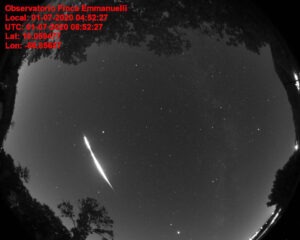
Figure 25 – Meteor detected in Yauco, Puerto Rico, on July 01, 2020, at 2h05m UTC (Photo: Rafael Emmanuelli Jiménez).
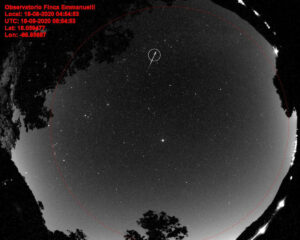
Figure 26 – Meteor detected in Yauco, Puerto Rico, on August 18, 2020, at 8h54m UTC (Photo: Rafael Emmanuelli Jiménez).
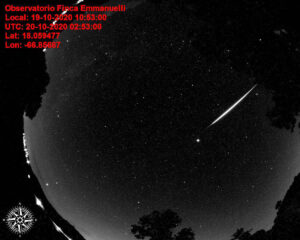
Figure 27 – Meteor detected in Yauco, Puerto Rico, on October 19, 2020, at 2h53m UTC (Photo: Rafael Emmanuelli Jiménez).
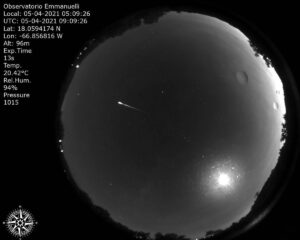
Figure 28 – Meteor detected in Yauco, Puerto Rico, on May 4, 2021, at 9h09m UTC (Photo: Rafael Emmanuelli Jiménez).
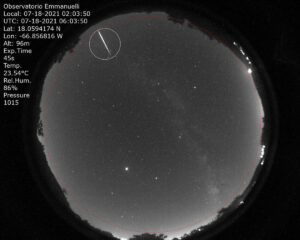
Figure 29 – Meteor detected in Yauco, Puerto Rico, on July 18, 2021, at 6h03m UTC (Photo: Rafael Emmanuelli Jiménez).
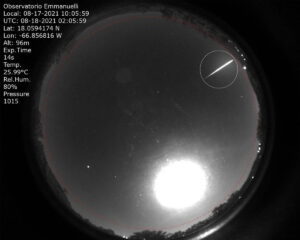
Figure 30 – Meteor detected in Yauco, Puerto Rico, on August 17, 2021, at 2h05m UTC (Photo: Rafael Emmanuelli Jiménez).
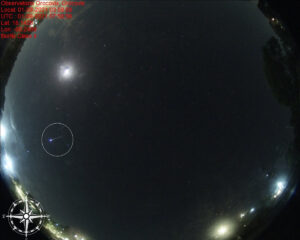
Figure 31 – Meteor detected in Orocovis, Puerto Rico, on September 1, 2021 at 7h58m UTC. (Photo: Orocovix Observatory).
| # | Day | M | Year | UTC | Dur. | Location | Source | Comments | Online Footage |
| 1 | 5 | 4 | 1989 | 0526 | 4s | Puerto Rico | AO | bolide AIDA | https://bit.ly/3oG2Oof |
| 2 | 14 | 12 | 2011 | 0413 | Puerto Rico | SAC | Geminid | https://bit.ly/3qw2Wqe | |
| 3 | 4 | 1 | 2012 | 0708 | Puerto Rico | SAC | Quadrantid | https://bit.ly/3HdRPJj | |
| 4 | 15 | 2 | 2012 | 0140 | W and SW of PR | SAC | slow bright meteor | https://bit.ly/3EAkF4W | |
| 5 | 10 | 3 | 2012 | 0900 | 10s | Puerto Rico | SAC | bolide over PR | https://bit.ly/32zBGPw |
| 6 | 11 | 4 | 2012 | 0622 | Puerto Rico | SAC | bolide over PR | https://bit.ly/3HcLbTO | |
| 7 | 21 | 4 | 2012 | 0357 | Puerto Rico | SAC | Lyrid meteors | https://bit.ly/32rtyAV | |
| 8 | 2 | 5 | 2012 | 0111 | Puerto Rico | SAC | meteor behind the clouds | https://bit.ly/32tZK6K | |
| 9 | 10 | 8 | 2012 | 0136 | 14s | Rincón, PR | SAC | slow meteor | https://bit.ly/3pvn90f |
| 10 | 11 | 8 | 2012 | 0336 | Puerto Rico | SAC | Perseids | https://bit.ly/3yZIOAV | |
| 11 | 2 | 11 | 2012 | 0025 | 3s | Puerto Rico | SAC | meteors | https://bit.ly/3mDnGLH |
| 12 | 4 | 11 | 2012 | 0351 | 2s | Puerto Rico | SAC | meteors | https://bit.ly/3mDnGLH |
| 13 | 5 | 11 | 2012 | 0755 | Puerto Rico | SAC | meteors | https://bit.ly/3mDnGLH | |
| 14 | 17 | 11 | 2012 | 0729 | Puerto Rico | SAC | Leonid meteors | https://bit.ly/3mBnjRV | |
| 15 | 13 | 12 | 2012 | 0525 | Puerto Rico | SAC | Geminid meteors | https://bit.ly/3eu4Z8U | |
| 16 | 3 | 1 | 2013 | 0740 | Puerto Rico | SAC | Quadrantid meteors | https://bit.ly/3Er4M0R | |
| 17 | 14 | 2 | 2013 | ? | Rodas, Cuba | ? | bright meteor | https://bit.ly/3rENY3c | |
| 18 | 5 | 3 | 2013 | 0240 | 4s | Puerto Rico | SAC | bright meteor | https://bit.ly/3Ha2zZg |
| 19 | 22 | 4 | 2013 | 0915 | Puerto Rico | SAC | Lyrid | https://bit.ly/311qUkC | |
| 20 | 6 | 5 | 2013 | 0824 | Puerto Rico | SAC | Eta-Aquariid | https://bit.ly/3Ez6I7r | |
| 21 | 21 | 7 | 2013 | 0548 | Puerto Rico | SAC | bright meteor | https://bit.ly/32CA0VA | |
| 22 | 1 | 8 | 2013 | 0423 | Puerto Rico | SAC | Perseid | https://bit.ly/3pvFIBp | |
| 23 | 5 | 8 | 2013 | Dominican Republic | ? | meteor | https://bit.ly/3oG3ZEb | ||
| 24 | 5 | 8 | 2013 | 0455 | 2s | Puerto Rico | SAC | Perseid | https://bit.ly/3Ev3DW4 |
| 25 | 7 | 8 | 2013 | 0858 | 1s | Puerto Rico | SAC | Perseid | https://bit.ly/3Ev3DW4 |
| 26 | 12 | 8 | 2013 | 0444 | 4s | Puerto Rico | SAC | Perseid | https://bit.ly/3Ev3DW4 |
| 27 | 13 | 8 | 2013 | 0754 | Puerto Rico | SAC | Perseid | https://bit.ly/3Ev3DW4 | |
| 28 | 18 | 1 | 2014 | 0943 | 5s | San Juan, Arecibo, Ponce y Aguadilla, PR | SAC | bright meteor | https://bit.ly/3z21wru |
| 29 | 18 | 2 | 2014 | 1058 | Puerto Rico | SAC | bright meteor | https://bit.ly/3qlWous | |
| 30 | 30 | 4 | 2014 | 0145 | Puerto Rico | SAC | bright meteor | https://bit.ly/3Ey2n4z | |
| 31 | 23 | 5 | 2014 | 0635 | Puerto Rico | SAC | Camelopardalid meteor | https://bit.ly/3FxLwjD | |
| 32 | 23 | 5 | 2014 | 0626 | Puerto Rico | SAC | meteor | https://bit.ly/3EwCAJX | |
| 33 | 17 | 6 | 2014 | 0154 | Puerto Rico | SAC | meteor | https://bit.ly/3JeNbN4 | |
| 34 | 13 | 7 | 2014 | 0210 | 4s | Puerto Rico | SAC | Slow bright meteor | https://bit.ly/3ptwgP6 |
| 35 | 18 | 7 | 2014 | 0307 | 3s | Puerto Rico | SAC | bright meteor | https://bit.ly/311rKxM |
| 36 | 28 | 7 | 2014 | 0827 | Puerto Rico | SAC | Perseid | https://bit.ly/3JeNhEq | |
| 37 | 7 | 8 | 2014 | 0711 | Puerto Rico | SAC | Perseid | https://bit.ly/3Jm3fgg | |
| 38 | 13 | 8 | 2014 | 0456 | Puerto Rico | SAC | Perseid | https://bit.ly/312JOaV | |
| 39 | 19 | 8 | 2014 | 0440 | Puerto Rico | SAC | meteor | https://bit.ly/3qqxYA1 | |
| 40 | 22 | 10 | 2014 | 0549 | Puerto Rico | SAC | Orionid | https://bit.ly/3qvHK3M | |
| 41 | 18 | 11 | 2014 | 0530 | Puerto Rico | SAC | Leonid | https://bit.ly/3FwKK6n | |
| 42 | 13 | 12 | 2014 | 0540 | Puerto Rico | SAC | Geminid | https://bit.ly/3qqho37 | |
| 43 | 28 | 12 | 2014 | 0618 | 44s | Puerto Rico | SAC | slow meteor probably space trash | https://bit.ly/3mxyYRx |
| 44 | 3 | 4 | 2015 | 2342 | Camuy, PR | SAC | bright meteor | https://bit.ly/3HcEpxp | |
| 45 | 15 | 4 | 2015 | 0224 | Puerto Rico | SAC | meteor | https://bit.ly/3qsdHKv | |
| 46 | 31 | 5 | 2015 | 0315 | Puerto Rico | SAC | meteor with sonic boom | https://bit.ly/3mB0AFu | |
| 47 | 10 | 8 | 2015 | 0439 | Puerto Rico | SAC | Perseid | https://bit.ly/3118mkr | |
| 48 | 13 | 8 | 2015 | 0631 | Puerto Rico | SAC | Perseid | https://bit.ly/3z1gCO1 | |
| 49 | 20 | 8 | 2015 | 0129 | 4s | Puerto Rico | SAC | bright meteor | https://bit.ly/3Er5Ku1 |
| 50 | 27 | 9 | 2015 | 0358 | 3s | Puerto Rico | SAC | bright meteor | https://bit.ly/32CAV8u |
| 51 | 21 | 10 | 2015 | 0832 | Puerto Rico | SAC | Orionid | https://bit.ly/3Hka5kx | |
| 52 | 12 | 11 | 2015 | 0134 | 6s | Puerto Rico | SAC | bright meteor | https://bit.ly/3mDXwZr |
| 53 | 15 | 12 | 2015 | 0720 | Puerto Rico | SAC | Geminid | https://bit.ly/3eqgVZc | |
| 54 | 25 | 5 | 2016 | 0435 | 3s | Cabo Rojo, PR | FL | Caribbean fireball | https://bit.ly/3szlOYl |
| 55 | 2 | 6 | 2016 | 0003 | 5s | Cabo Rojo, PR | FL | Earth Grazing Fireball | https://bit.ly/3z3mEh8 |
| 56 | 2 | 6 | 2016 | 0106 | 1s | Puerto Rico | SAC | meteor | https://bit.ly/3mC9Nxs |
| 57 | 13 | 7 | 2016 | 0006 | 4s | Cabo Rojo, PR | FL | audible meteor | https://bit.ly/3qwr63Y |
| 58 | 26 | 7 | 2016 | 0109 | Puerto Rico | SAC | green meteor | https://bit.ly/3pux2v6 | |
| 59 | 26 | 7 | 2016 | 0249 | Cabo Rojo, PR | FL | meteor explodes 3 times | https://bit.ly/3Ex8OET | |
| 60 | 12 | 8 | 2016 | 0603 | Puerto Rico | SAC | Perseid | https://bit.ly/3EDzYtW | |
| 61 | 13 | 9 | 2016 | 2321 | Puerto Rico | SAC | bright meteor | https://bit.ly/32zDNmq | |
| 62 | 11 | 10 | 2016 | 0930 | 6s | Puerto Rico | SAC | meteor | https://bit.ly/3HclC5e |
| 63 | 1 | 12 | 2016 | 0402 | Puerto Rico | SAC | meteor | https://bit.ly/3pwqvQM | |
| 64 | 13 | 12 | 2016 | 0935 | Puerto Rico | SAC | Geminid | https://bit.ly/3EJAlTP | |
| 65 | 14 | 12 | 2016 | 0636 | Cabo Rojo, PR | FL | huge Geminid fireball | https://bit.ly/3Jk7VmB | |
| 66 | 12 | 1 | 2017 | 0911 | Cabo Rojo, PR | FL | fireball explodes near Southern Cross | https://bit.ly/3evymrw | |
| 67 | 8 | 3 | 2017 | 0942 | San Juan, PR | SAC | meteor | https://bit.ly/3EwgdEk | |
| 68 | 9 | 8 | 2017 | 0909 | Cabo Rojo, PR | FL | Perseid fireball | https://bit.ly/3z11v7n | |
| 69 | 12 | 8 | 2017 | 0734 | Cabo Rojo, PR | FL | Perseid fireball | https://bit.ly/3qwYk3p | |
| 70 | 25 | 12 | 2017 | 0932 | Cabo Rojo, PR | FL | meteor | https://bit.ly/3JoE6S4 | |
| 71 | 18 | 1 | 2018 | 0253 | 12s | Cabo Rojo, PR | FL | Rare Earth-grazer Meteor | https://bit.ly/3eroEWP |
| 72 | 3 | 2 | 2018 | 0055 | Cabo Rojo, PR | FL | Huge Meteor | https://bit.ly/3FzvSEk | |
| 73 | 1 | 5 | 2018 | 0508 | Cabo Rojo, PR | FL | Fragmenting Meteor | https://bit.ly/3FyxUoh | |
| 74 | 29 | 8 | 2018 | 0630 | 3s | Cabo Rojo, PR | FL | Fireball | https://bit.ly/3euRLZy |
| 75 | 29 | 8 | 2018 | 0634 | 3s | Cabo Rojo, PR | SAC | meteor | https://bit.ly/3FsX5Zf |
| 76 | 3 | 11 | 2018 | 0334 | 3s | Cabo Rojo, PR | FL | large meteor | https://bit.ly/3ErRr8x |
| 77 | 27 | 11 | 2018 | 0633 | 4s | Cabo Rojo, PR | FL | two fireballs | https://bit.ly/32p8Cuu |
| 78 | 1 | 2 | 2019 | Viñales, Cuba | public | meteorite fall | http://bit.ly/2UJ18c2 | ||
| 79 | 9 | 4 | 2019 | 0801 | 5s | Cabo Rojo, PR | FL | Huge Meteor | https://bit.ly/3FA9z1l |
| 80 | 14 | 4 | 2019 | ? | west of Haiti | CNEOS | 0.1 kt fireball | ||
| 81 | 22 | 6 | 2019 | 2125 | south of PR | GLM | Asteroid 2019 MO | https://bit.ly/33Xg401 | |
| 82 | 14 | 7 | 2019 | 0122 | 4s | Puerto Rico | SAC | bright fireball | https://bit.ly/3mBE53e |
| 83 | 22 | 7 | 2019 | 0846 | Cabo Rojo, PR | FL | Perseid | https://bit.ly/33RkiX0 | |
| 84 | 5 | 8 | 2019 | 0935 | 2s | Cabo Rojo, PR | FL | early morning fireball | https://bit.ly/3HfRVQO |
| 85 | 31 | 8 | 2019 | 0102 | Cabo Rojo, PR | FL | meteor | https://bit.ly/3FMthXu | |
| 86 | 11 | 9 | 2019 | 0228 | 4s | Cabo Rojo, PR | FL | fireball over PR | https://bit.ly/3pyxvMZ |
| 87 | 12 | 12 | 2019 | 0905 | 2s | Cabo Rojo, PR | FL | Geminid meteor near Lajas | https://bit.ly/32onqJT |
| 88 | 13 | 12 | 2019 | 0504 | Puerto Rico | SAC | Geminid | https://bit.ly/3z2NNRe | |
| 89 | 21 | 12 | 2019 | 0939 | 2s | Cabo Rojo, PR | FL | Geminid meteor near Lajas | https://bit.ly/3pwl2tc |
| 90 | 22 | 12 | 2019 | 0520 | 2s | Cabo Rojo, PR | FL | Geminid meteor near Lajas | https://bit.ly/3mGn2gF |
| 91 | 23 | 12 | 2019 | 0058 | 6s | Puerto Rico | SAC | bright green meteor | https://bit.ly/3H7g4Jk |
| 92 | 12 | 1 | 2020 | 0831 | 4s | Cabo Rojo, PR | FL | slow moving fireball | https://bit.ly/3mEl8wN |
| 93 | 17 | 1 | 2020 | 2130 | Caguas, PR | SAC | very bright bolide | https://bit.ly/311nP3Y | |
| 94 | 21 | 2 | 2020 | 0657 | 3s | Puerto Rico | SAC | slow green meteor | https://bit.ly/3qmBlYI |
| 95 | 21 | 2 | 2020 | 0731 | Puerto Rico | SAC | bright meteor #2 | https://bit.ly/3eq0vQG | |
| 96 | 21 | 2 | 2020 | 0730 | Cabo Rojo, PR | FL | bolide west of PR | https://bit.ly/3mBEumc | |
| 97 | 26 | 2 | 2020 | 0331 | 5s | Cabo Rojo, PR | FL | fireball west of PR | https://bit.ly/3qoiRqM |
| 98 | 15 | 4 | 2020 | 0416 | 2s | Cabo Rojo, PR | FL | meteor | https://bit.ly/3mD31HL |
| 99 | 23 | 4 | 2020 | Cabo Rojo, PR | FL | meteors | https://bit.ly/3z23b0k | ||
| 100 | 26 | 4 | 2020 | 0039 | 2s | Puerto Rico | SAC | bright meteor | https://bit.ly/3qMlLWH |
| 101 | 2 | 5 | 2020 | ? | 5s | Dominican Republic | ? | meteor | https://bit.ly/3GMujCA |
| 102 | 15 | 5 | 2020 | 0428 | 3s | Cabo Rojo, PR | FL | fireball south of PR | https://bit.ly/3JlRlCR |
| 103 | 16 | 6 | 2020 | 0440 | Cabo Rojo, PR | FL | 3 bright meteors | https://bit.ly/3FCnL9R | |
| 104 | 1 | 7 | 2020 | 0855 | 6s | Puerto Rico | SAC | bright meteor | https://bit.ly/33RNcq0 |
| 105 | 1 | 7 | 2020 | 0857 | 4s | Cabo Rojo, PR | FL | large fireball | https://bit.ly/3pARZ7y |
| 106 | 31 | 7 | 2020 | 1148 | 4s | Puerto Rico | SAC | meteor | https://bit.ly/3px7mOH |
| 107 | 12 | 8 | 2020 | Cabo Rojo, PR | FL | Perseid meteors | https://bit.ly/3ExgeYz | ||
| 108 | 13 | 8 | 2020 | 0803 | 1s | Puerto Rico | SAC | Perseid | https://bit.ly/3z0ZSX8 |
| 109 | 17 | 10 | 2020 | 0744 | 5s | Puerto Rico | SAC | very bright meteor | https://bit.ly/32GPuI8 |
| 110 | 21 | 10 | 2020 | 0322 | 3s | Cabo Rojo, PR | FL | Taurid fireball | https://bit.ly/3Hlpocq |
| 111 | 17 | 11 | 2020 | 0615 | 4s | Puerto Rico | SAC | Leonid | https://bit.ly/3mBeWpy |
| 112 | 13 | 12 | 2020 | 0953 | 2s | Puerto Rico | SAC | Geminid | https://bit.ly/3qqixYF |
| 113 | 15 | 12 | 2020 | 2s | Cabo Rojo, PR | FL | Geminid | https://bit.ly/3sDyVYo | |
| 114 | 11 | 1 | 2021 | 1108 | 4s | Puerto Rico | SAC | meteor | https://bit.ly/341LdQa |
| 115 | 24 | 1 | 2021 | 0320 | 5s | Puerto Rico | SAC | bright meteor | https://bit.ly/313GcoZ |
| 116 | 4 | 3 | 2021 | 0825 | 6s | Puerto Rico | SAC | meteor | https://bit.ly/3z37GYl |
| 117 | 19 | 3 | 2021 | 0206 | 4.2s | Kingston, Jamaica | public | bright meteor | https://cutt.ly/jco8Nt7 |
| 118 | 21 | 4 | 2021 | 0254 | 3s | Cabo Rojo, PR | FL | meteor | https://bit.ly/32onysR |
| 119 | 5 | 5 | 2021 | 0808 | 9s | Puerto Rico | SAC | meteor | https://bit.ly/346lE0t |
| 120 | 7 | 5 | 2021 | Gurabo, PR | public | meteor | https://bit.ly/3gHFOkb | ||
| 121 | 19 | 5 | 2021 | 0218 | 5s | Puerto Rico | SAC | meteor | https://bit.ly/3JgxV2p |
| 122 | 15 | 7 | 2021 | 0855 | 20s | Puerto Rico | SAC | slow meteor | https://bit.ly/3mBiOa1 |
| 123 | 28 | 7 | 2021 | 0908 | Puerto Rico | SAC | meteors | https://bit.ly/33PKD7R | |
| 124 | 31 | 7 | 2021 | 0753 | 2s | Puerto Rico | SAC | meteor | https://bit.ly/3mBOJHm |
| 125 | 8 | 8 | 2021 | 0139 | 2s | Cabo Rojo, PR | FL | bright meteor | https://bit.ly/32tSR5n |
| 126 | 10 | 8 | 2021 | Cabo Rojo, PR | FL | Perseid meteor | https://bit.ly/3JlJjdf | ||
| 127 | 10 | 8 | 2021 | 0737 | Puerto Rico | SAC | Perseid | https://bit.ly/3FKs8ja | |
| 128 | 13 | 8 | 2021 | 0824 | Puerto Rico | SAC | Perseid | https://bit.ly/32DlOM2 | |
| 129 | 17 | 8 | 2021 | 0205 | 4s | Puerto Rico | SAC | bright meteor | https://bit.ly/3JoVbvd |
| 130 | 1 | 10 | 2021 | 0628 | 4s | Puerto Rico | SAC | South Taurid meteor | https://bit.ly/343sCDl |
| 131 | 26 | 10 | 2021 | 0659 | 2s | Puerto Rico | SAC | Orionid meteor | https://bit.ly/3FDr9RZ |
| 132 | 13 | 11 | 2021 | 0206 | Puerto Rico | SAC | North Taurid meteor | https://bit.ly/3qxIqG5 | |
| 133 | 23 | 11 | 2021 | 0901 | Puerto Rico | SAC | meteor | https://bit.ly/3sD4ul3 | |
| 134 | 19 | 11 | 2021 | 0900 | Cabo Rojo, PR | FL | meteor | https://bit.ly/3Ez3gtw | |
| 135 | 19 | 11 | 2021 | 0508 | Cabo Rojo, PR | FL | meteor | https://bit.ly/32wlOxA | |
| 136 | 14 | 12 | 2021 | 0730 | Puerto Rico | SAC | Geminid | https://bit.ly/3HwtLBV | |
| 137 | 28 | 12 | 2021 | 0123 | Cabo Rojo, PR | FL | meteor near Jupiter | https://bit.ly/3Hp0qcu | |
| 138 | 3-4 | 1 | 2022 | SAC | Quadrantid meteors | https://bit.ly/3HMrzXl | |||
| 139 | 6 | 1 | 2022 | 0428 | Cabo Rojo, PR | FL | Green meteor | https://bit.ly/3sC7lcy |
Table 1 – Compilation of Caribbean meteor and bolides. Abbreviations: AO–Arecibo Observatory, CNEOS–Center for NEO Studies, GLM–Geostationary Lightning Mapper, FL–Frankie Lucena, SAC–Caribbean Astronomical Society.
Acknowledgment
Luis E. Ramos Guadalupe is thanked for kindly provided historical newspapers of Cuban meteors. David Meisel provided literature and photos of bolide AIDA. Mark Sudduth and Brent Lynn kindly provided footage and information on the fireball of February 21, 2020, over the southeast of the Dominican Republic. Rafael Emmanuelli Jiménez, Observatorio Orocovix, and Gastón Junca Vega kindly provided original footage of meteors. Special thanks to Paul Roggemans for his help in the lay-out and the correction of this article.
References
Barham H. (1717-1719). “A letter of that curious naturalist Mr. Henry Barham, R.S.S to the publisher, giving a relation of a fiery meteor seen by him, in Jamaica, to strike into Earth”. Philosophical Transactions, 30, 837–838.
Borovička J. and Charvát Z. (2009). “Meteosat Observation of the Atmospheric Entry of 2008 TC3 over Sudan and the Associated Dust Cloud”. Astronomy & Astrophysics, 507, 1015–22. https://doi.org/10.1051/0004-6361/200912639.
Brown P. G., Assink J. D., Astiz L., Blaauw R., Boslough M. B., Borovička J., Brachet N. et al. (2013). “A 500-Kiloton Airburst over Chelyabinsk and an Enhanced Hazard from Small Impactors”. Nature, 503, 238–41.
Brown P., Spalding R. E., ReVelle D. O., Tagliaferri E. and Worden S. P. (2002). “The Flux of Small Near-Earth Objects Colliding with the Earth”. Nature, 420, 294–6. https://doi.org/10.1038/nature01238.
Ceballos-Izquierdo Y. (2019). “Recuento de los meteoritos reportados en Cuba y bibliografía sobre el tema”. An. Acad. Cienc. Cuba, 9, 1, 1–18.
Ceballos-Izquierdo Y. (2021). “Bolas de fuego en los cielos de Cuba”. Juventud Técnica, 422, 4–9.
Ceballos-Izquierdo Y., Di Pietro C. A, and Zurita M. (2021a). “The bolide of March 19, 2021 in eastern Cuba and comments on historical Cuban bright fireballs”. eMetN, 6, 555–561.
Ceballos-Izquierdo Y., Orihuela J., Goncalves G., Zurita M., Cardozo-Mourao D., and Delgado-Manzor H. (2021b). “Meteorite and bright fireball records from Cuba”. Mineralia Slovaca, 53, 2, 131–145.
Darwin Ch. (1840). “Journal of Researches into the Geology and Natural History of the Various Countries visited by H. M. S. Beagle”. London.
De la Sagra R. (1867). “Sur une pluie d’étoiles filantes observée à Cuba, dans la nuit du 12 novembre 1833”. Comptes Rendu de l’Academie de Sciences, LXIV, 232.
Getman V. S., Mathews J. D., Morton Y. T., Zhou Q. and Roper R. G. (1991). “Bolide AIDA: Orbital and Physical Characteristics”. LPI Contributions, 765, 73.
Greg R. P. (1861). “A Catalogue of Meteorites and Fireballs from AD 2 to AD 1860”. Proceedings XIIIth Meeting of the British Association for the Advancement of Science, 48–118.
Hall M. (1889). “Detonating meteor”. Nature, 39, 368.
Hughes A., Sankar R., Davis K. E., Palotai C. and Free D. L. (2022). “Analysis of the April 13, 2021 bolide off the coast of Florida and Grand Bahama Island”. Meteoritics & Planetary Sciences, https://doi.org/10.1111/maps.13781.
Iturralde-Vinent M. and Arango-Arias E.D. (2021). “Registro sismológico de la explosión de un objeto no identificadoen la atmósfera superior de Cuba Oriental el 19 de marzo del 2021”. Revista Maya de Geociencias, 4, 37–46.
Jenniskens P., Albers J., Tillier C.E., Edgington S. F., Longenbaugh R. S., Goodman S. J., Rudlosky S. D., Hildebrand A. R., Hanton L., Ciceri F., Nowell R., Lyytinen E., Hladiuk D., Free D., et al. (2018). “Detection of meteoroid impacts by the Geostationary Lightning Mapper on the GOES-16 satellite”. Meteoritics & Planetary Sciences, 53, 2445–2469.
Kartashova A. P., Puzin V. B., Díaz A. A. and Estrada R. Z. (2017). “Cuban observations of the Geminid meteor shower in 2017”. INASAN Science Reports, 4, 294–299.
Lobanovsky Y. I. (2014). “Comet and Meteor Threat: Historical Aspects”. Synerjetics Group, available at: http://www.synerjetics.ru/article/history.htm (in Russian).
Lunsford R. (1995). “A.L.P.O. meteor observations, 01 Apr 1995–30 Jun 1995.” Journal of the Association of Lunar and Planetary Observers, 39, 37–39.
Matlovič P., Kornoš L., Kovácová M., Tóth J. and Licandro J. (2020). “Characterization of the June epsilon Ophiuchids meteoroid stream and the comet 300P/Catalina”. Astronomy & Astrophysics, 636, A122.
Meisel D. D., Getman V. S., Mathews J. D. and Jacobs S. C. (1995). “Bolide AIDA: Death of an Aubrite Meteoroid”. Icarus, 116, 227–254.
Naranjo F. and Aguilar R. (1941). “Notas sobre Morón”. Revista Síntesis.
Peláez O. (2010). “¿Bólido sobre el cielo pinareño?” Granma: available at: http://www.granma.cu/granmad/2010/06/12/ nacional/artic07.html/, last accessed 30 September 2019.
Poey A. (1862). “Estrellas fugaces observadas en La Habana del 24 de julio al 11 de agosto de 1862”. Versalles.
Poey A. (1864). “Étoiles filantes observées a la Havane du 24 juillet au 12 août, et remarques sur le retour périodique du mois d’août”. Comptes Rendus, 58, 119–124.
Ramos-Guadalupe L.E. (2004). “Sobre un notable bólido observado en La Habana en mayo de 1886”. Datos Astronómicos para Cuba, 89–91.
Rodríguez-Ferrer M. (1876). “Naturaleza y civilización de la grandiosa Isla de Cuba”. Madrid, Imprenta de J. Noguera.
Sankar R., Palotai C., Hueso R., Delcroix M., Chappel E., and Sánchez-Lavega A. (2020). “Fragmentation Modelling of the 2019 August Impact on Jupiter”. Monthly Notices of the Royal Astronomical Society, 493, 4622.
Solís-Díaz J. M. (2013). “Avistado en Calimete fenómeno celeste luminoso”. Radio Rebelde, available at: http://www.radiorebelde.cu/noticia/avistado-calimete-fenomeno-celesteluminoso-20130211/, last accessed 30 September.
Viñes R. (1886). “El aerolito de la noche del 10 de mayo de 1886”. Enciclopedia, 2, 5, 238–239.
Zuluaga J. I., Cuartas-Restrepo P. A., Ospina J. and Sucerquia M. (2019). “Can we predict the impact conditions of meter-sized meteoroids?” Monthly Notices of the Royal Astronomical Society. Letters, 486, L69–L73.
[2] https://bit.ly/3FeWycg, https://bit.ly/3FdH4Wb, https://bit.ly/3zHI3ww

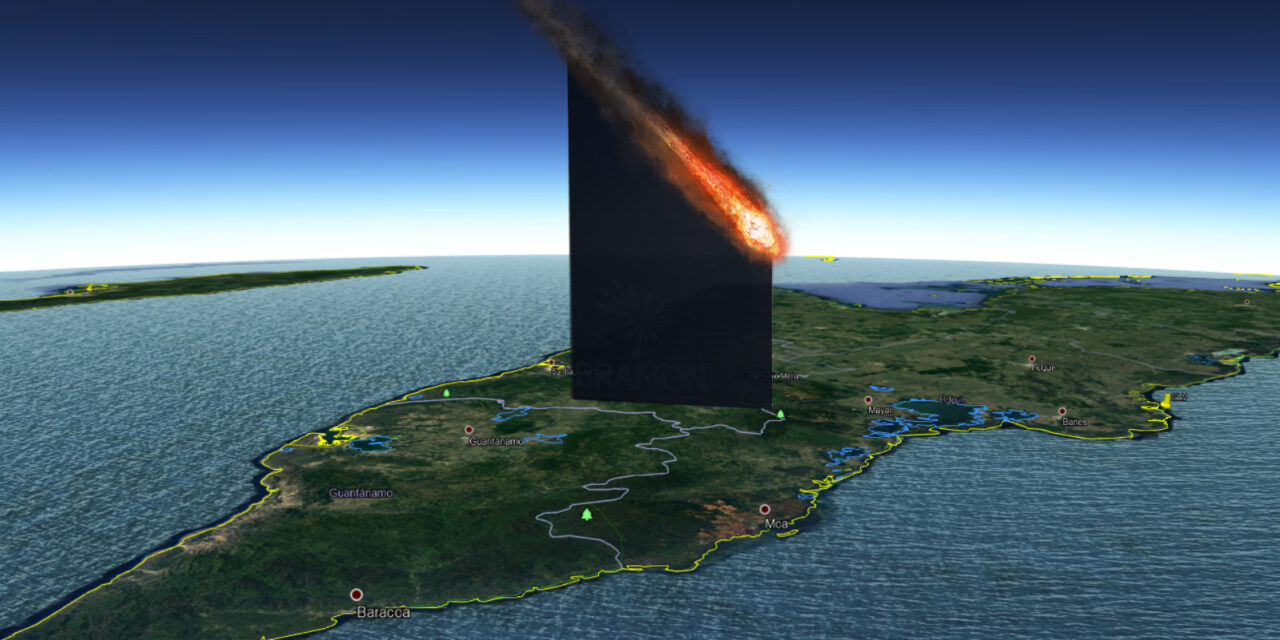

I enjoyed your article on meteors and bolides in the Caribbean. It is very informative and I am going to follow up by trying to find some of the Puerto Rican events in weather radar data. I am glad that you found my website useful:
https://ares.jsc.nasa.gov/meteorite-falls/events/caribbean-sea-near-puerto-rico
In the future, could I ask that you include a reference, especially if you’re going to copy text word for word?
Cheers,
Marc Fries
NASA JSC
Thanks Marc, hope you can bring us more info about the events!
Update: I see what happened here after closely reading the paper offered as a reference. That paper includes a verbatim copy of text which originally appeared on the NASA web page. The text in this article includes verbatim text from the referenced paper, making it appear that this article copied text from a NASA website and attributed it to the referenced paper.
Technically, NASA web pages are in the public domain and the text is free to use, but it might be seen as better practice to re-write text sufficient that it isn’t a verbatim copy. I am glad to see that the data in the webpage has proven to be useful. Good luck with your future observations and meteorite recoveries!